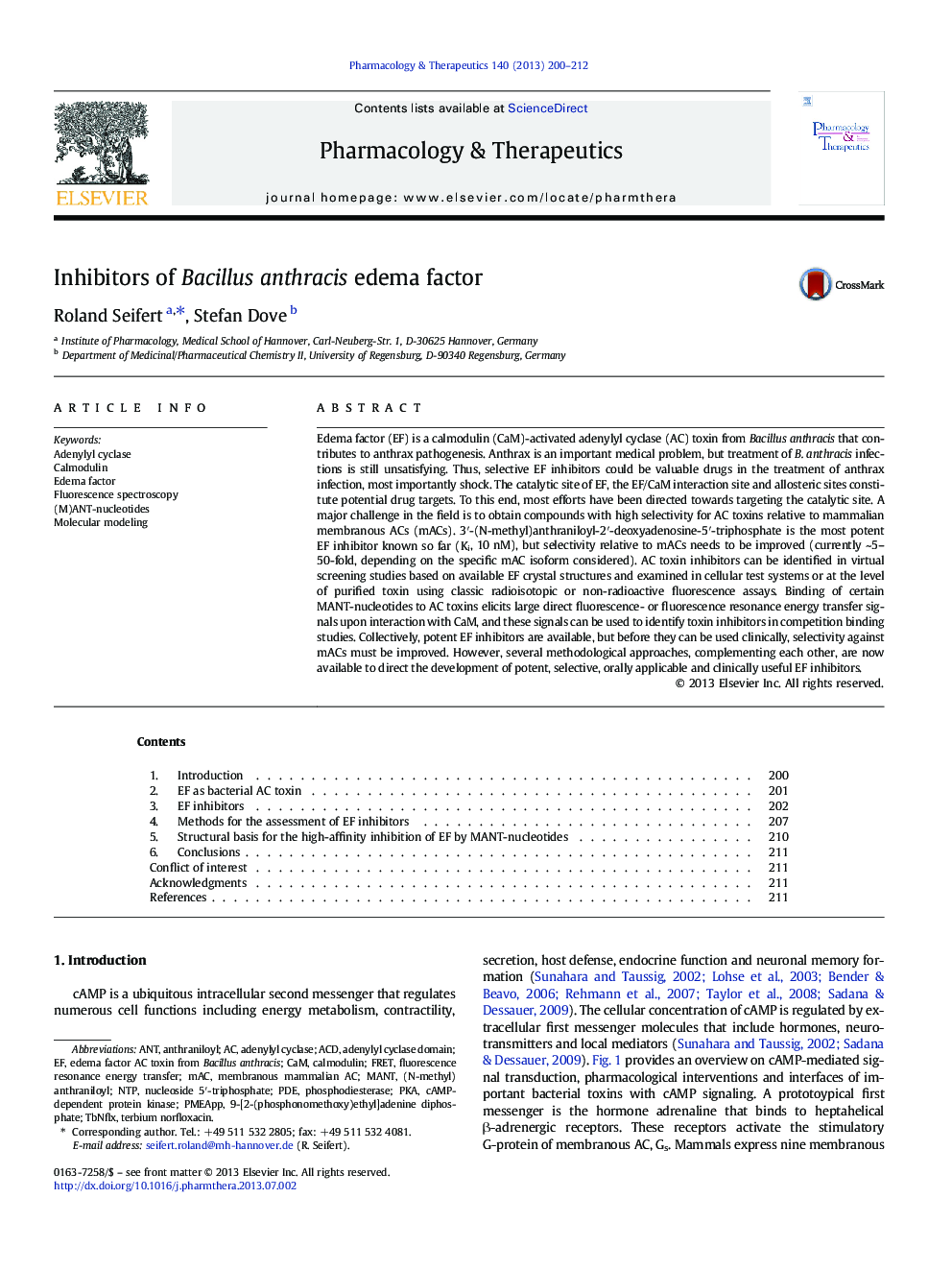| Article ID | Journal | Published Year | Pages | File Type |
|---|---|---|---|---|
| 2563844 | Pharmacology & Therapeutics | 2013 | 13 Pages |
Abstract
Edema factor (EF) is a calmodulin (CaM)-activated adenylyl cyclase (AC) toxin from Bacillus anthracis that contributes to anthrax pathogenesis. Anthrax is an important medical problem, but treatment of B. anthracis infections is still unsatisfying. Thus, selective EF inhibitors could be valuable drugs in the treatment of anthrax infection, most importantly shock. The catalytic site of EF, the EF/CaM interaction site and allosteric sites constitute potential drug targets. To this end, most efforts have been directed towards targeting the catalytic site. A major challenge in the field is to obtain compounds with high selectivity for AC toxins relative to mammalian membranous ACs (mACs). 3â²-(N-methyl)anthraniloyl-2â²-deoxyadenosine-5â²-triphosphate is the most potent EF inhibitor known so far (Ki, 10Â nM), but selectivity relative to mACs needs to be improved (currently ~5-50-fold, depending on the specific mAC isoform considered). AC toxin inhibitors can be identified in virtual screening studies based on available EF crystal structures and examined in cellular test systems or at the level of purified toxin using classic radioisotopic or non-radioactive fluorescence assays. Binding of certain MANT-nucleotides to AC toxins elicits large direct fluorescence- or fluorescence resonance energy transfer signals upon interaction with CaM, and these signals can be used to identify toxin inhibitors in competition binding studies. Collectively, potent EF inhibitors are available, but before they can be used clinically, selectivity against mACs must be improved. However, several methodological approaches, complementing each other, are now available to direct the development of potent, selective, orally applicable and clinically useful EF inhibitors.
Keywords
Related Topics
Health Sciences
Pharmacology, Toxicology and Pharmaceutical Science
Pharmacology
Authors
Roland Seifert, Stefan Dove,
